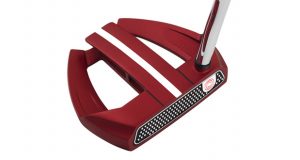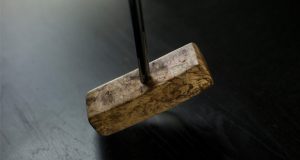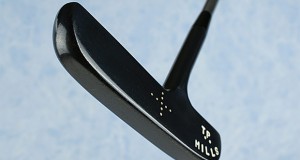Belly putters are growing wings and flying off the shelves these days, and the phenomenon shows no signs of abating as more and more golfers aim to tap into the belly putter magic that has recently made such an impact on the professional tours.
But before you rush out and buy the nearest belly putter, you should be vigilant about finding the proper fit to maximize your putting potential. Do tour professionals just grab the nearest putter with no regard to how it fits? Of course not—and neither should you.
In a recent piece, we delved into how you can establish the proper belly putter length for your physique and setup. Now we are going to take a closer look at the balance of the belly putter, and how you can find a better fit for your stroke.
As illustrated in PutterZone.com’s putter fitting book Putter Perfection, putter balance falls into two general categories. A “face-balanced” putter will generally appeal to golfers who employ a more straight-back-and-straight-through putting stroke, while a putter with “toe hang,” also known as “toe droop,” will generally appeal to those with an arcing stroke.
To determine the balance of a putter, simply stick out your hand and balance the shaft on an outstretched finger. If the face of the putter remains parallel to the ceiling or sky when balanced on your finger, then the putter is face balanced. If the face angles toward the ground, the putter has toe hang, as the toe of the putter is hanging down. And according to conventional golf wisdom, that hanging action is designed to flow with the path of an arcing stroke. Which brings us to the belly putter…
According to Adam Sheldon, master putter craftsman for Never Compromise and Cleveland Golf, when you take a conventional grip on a belly putter, the angle of the shaft combined with the rotational pivot of the torso essentially forces the putter head to move on an arcing path. “With any anchored stroke, when there’s equilibrium with the hands and stomach, it will take your putter head inside to square to inside along an arc,” he says.
This is why Cleveland Golf’s new Classic belly putters are balanced with toe hang to fit the arcing-style stroke. The SeeMore Putter Company also offers several belly putters with toe hang.
Sheldon does say, however, that if you hold your belly putter with an unconventional claw grip, you will mitigate the rotational force, thus making a face-balanced putter more appropriate. “As with any putter,” he says, “it simply comes down to matching the balance of the putter to the path of your stroke for improved consistency and results.”
To be fair, some experts maintain that putter balance is of little consequence to performance, and some golfers find that a face-balanced putter works just fine with an arcing stroke. Nevertheless, finding the best balance for your physique and stroke can be a crucial factor in your putting performance.
The larger point is that with a belly putter—as with any putter—a little time spent on finding the best fit can generate a big payoff on the green.
 PutterZone – Best Putter Reviews
PutterZone – Best Putter Reviews




